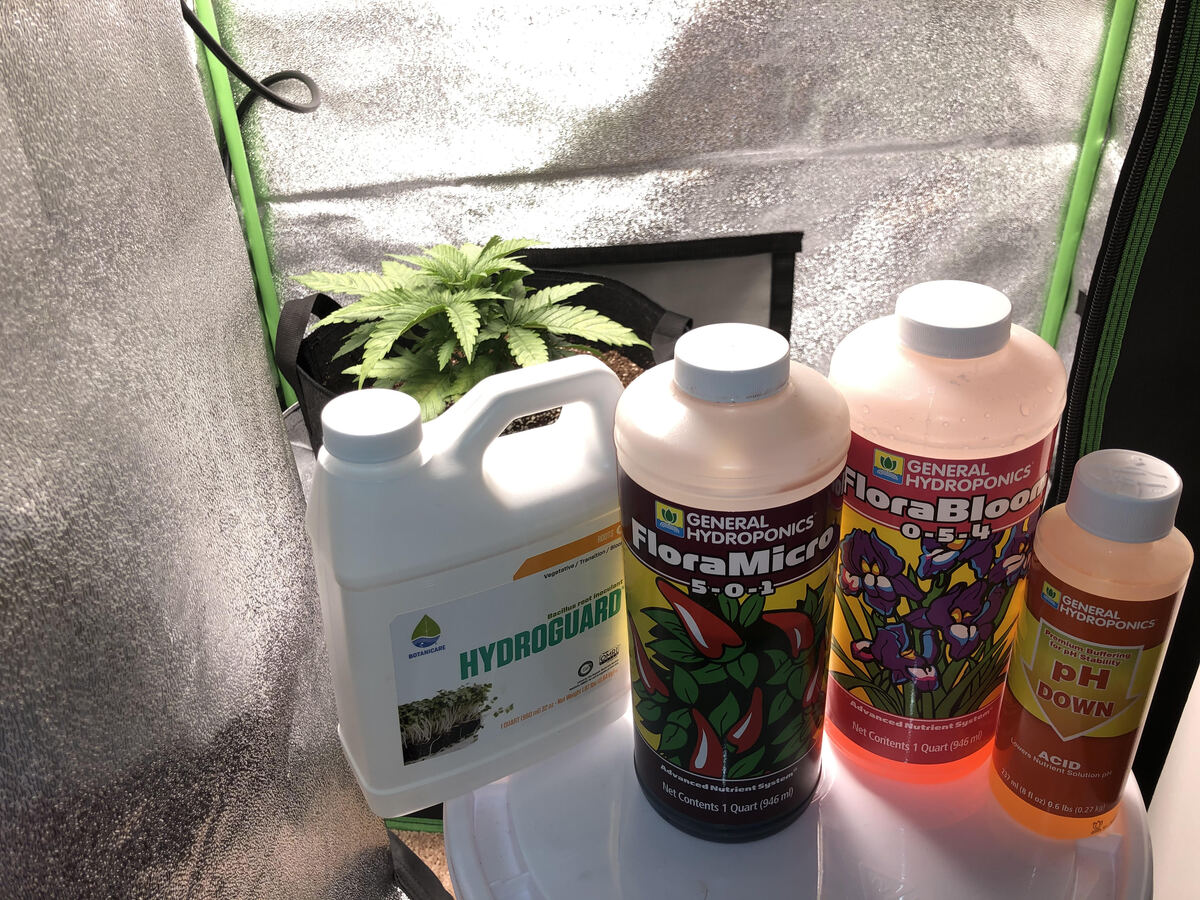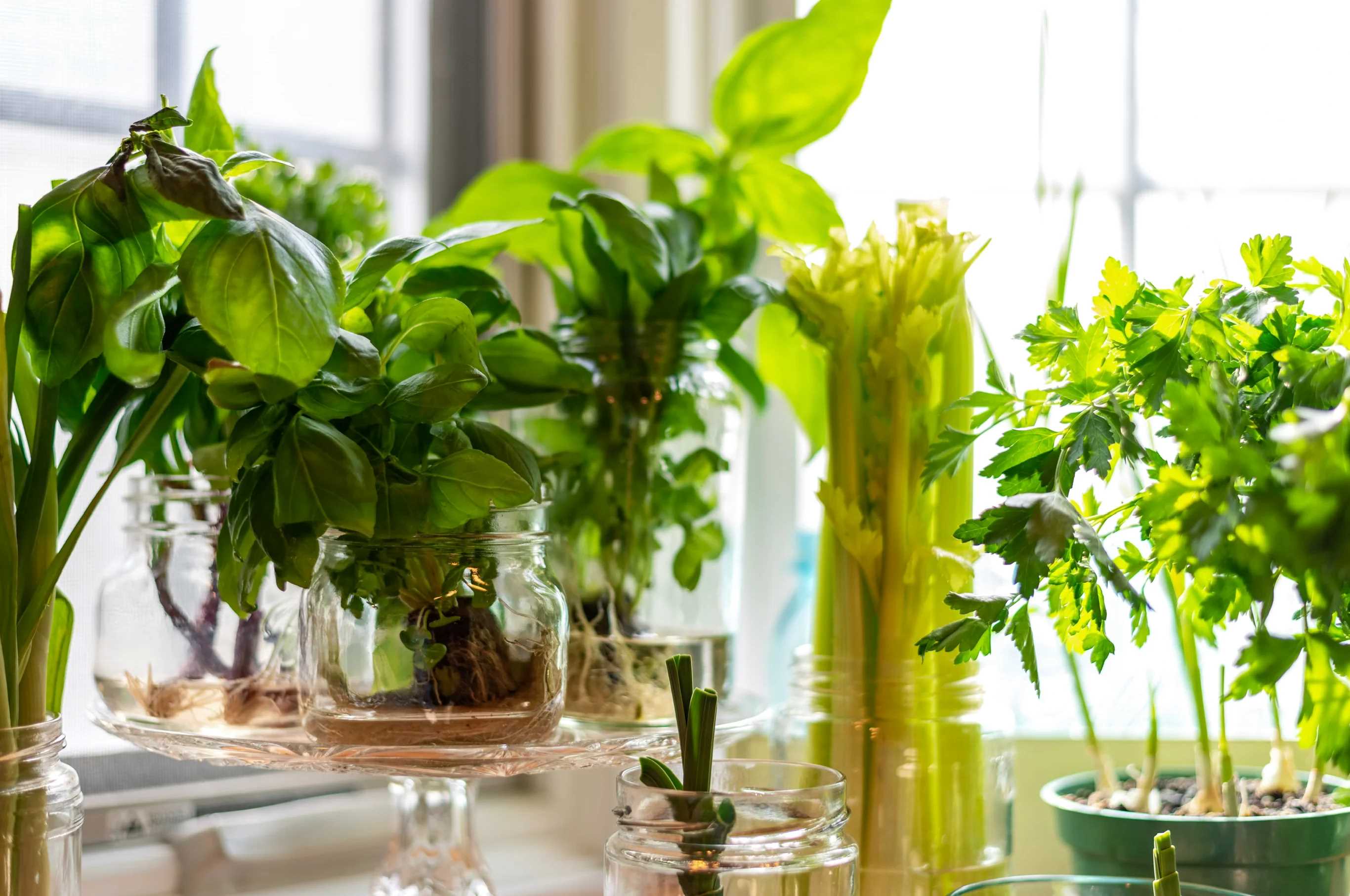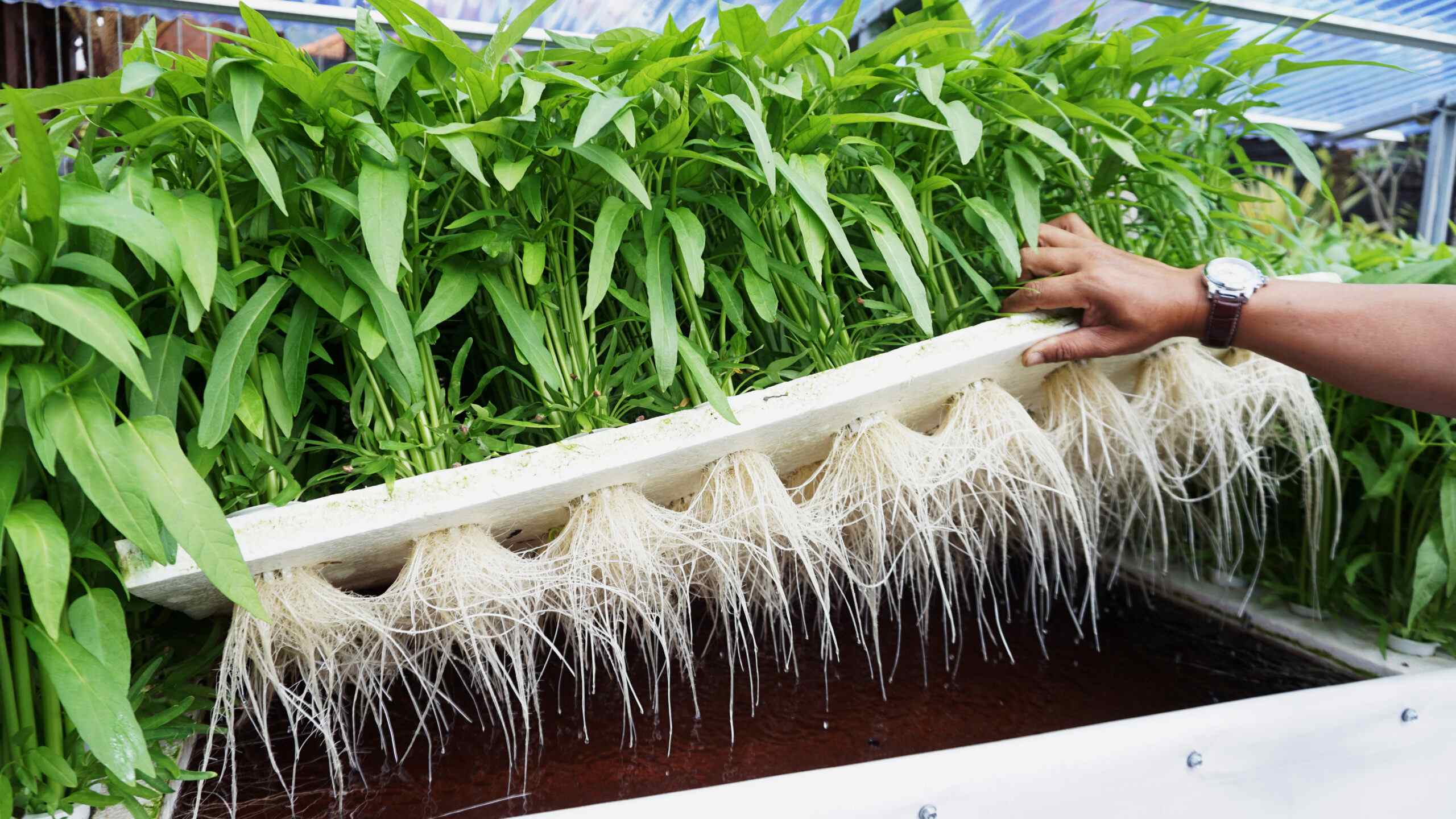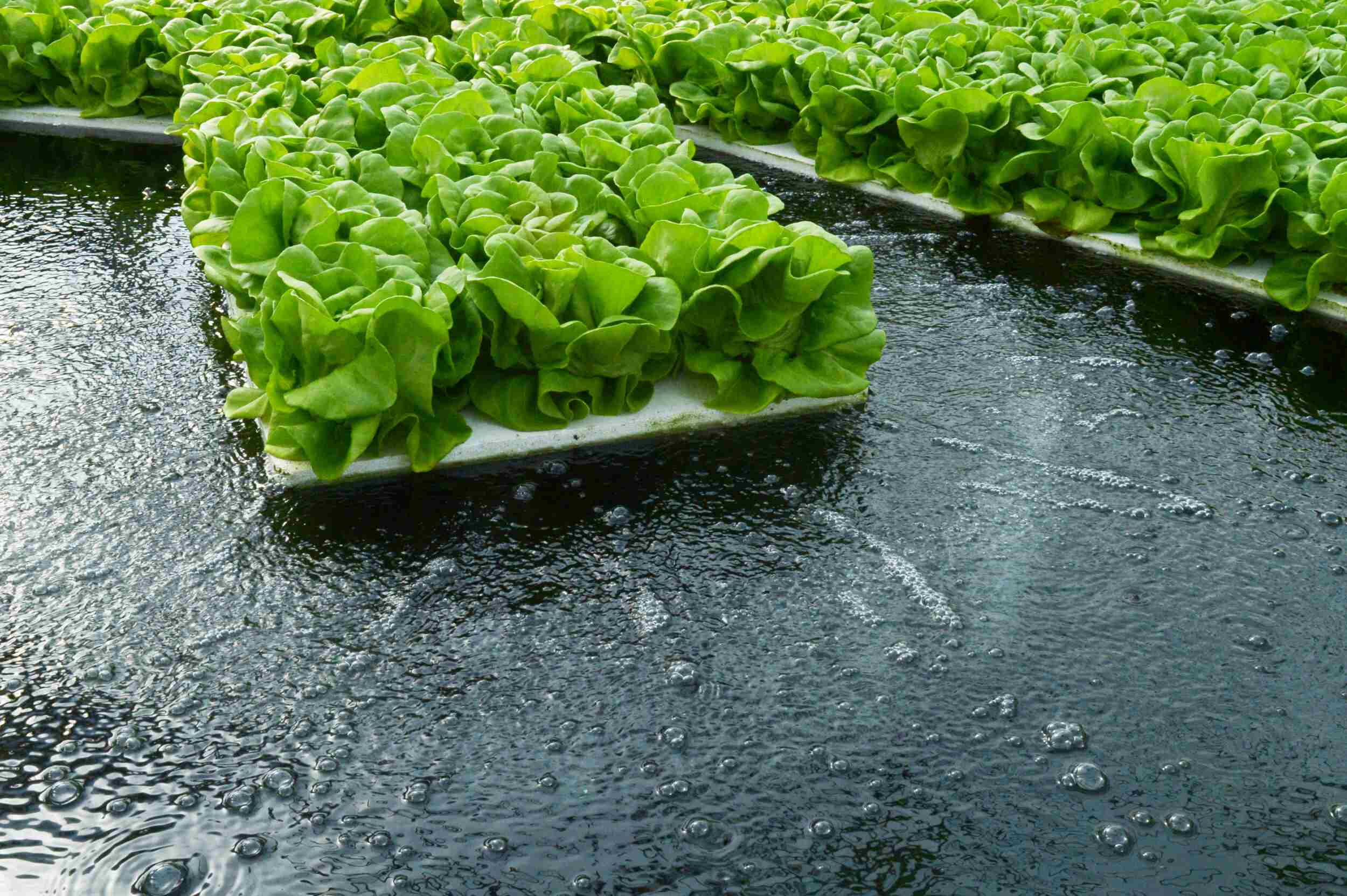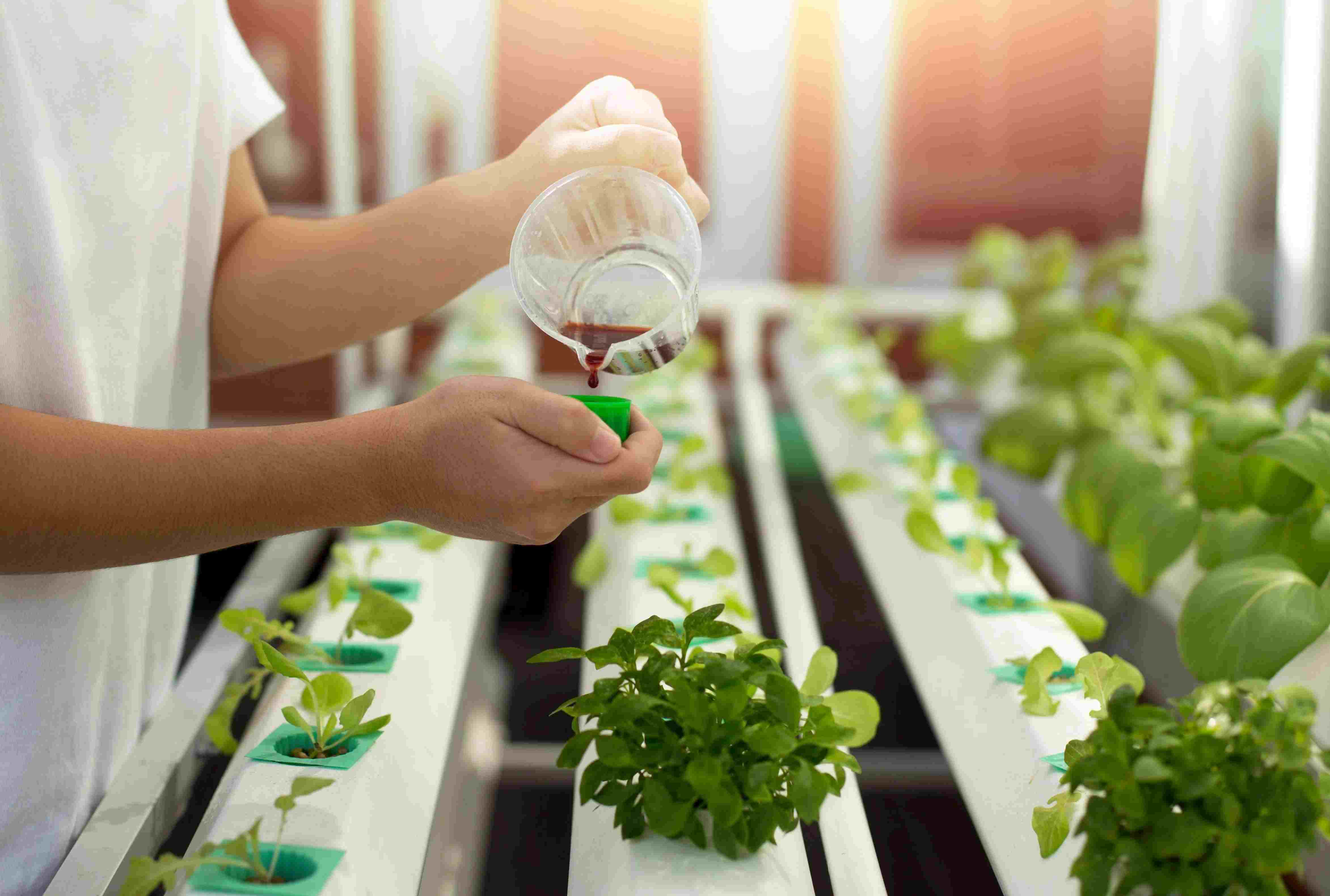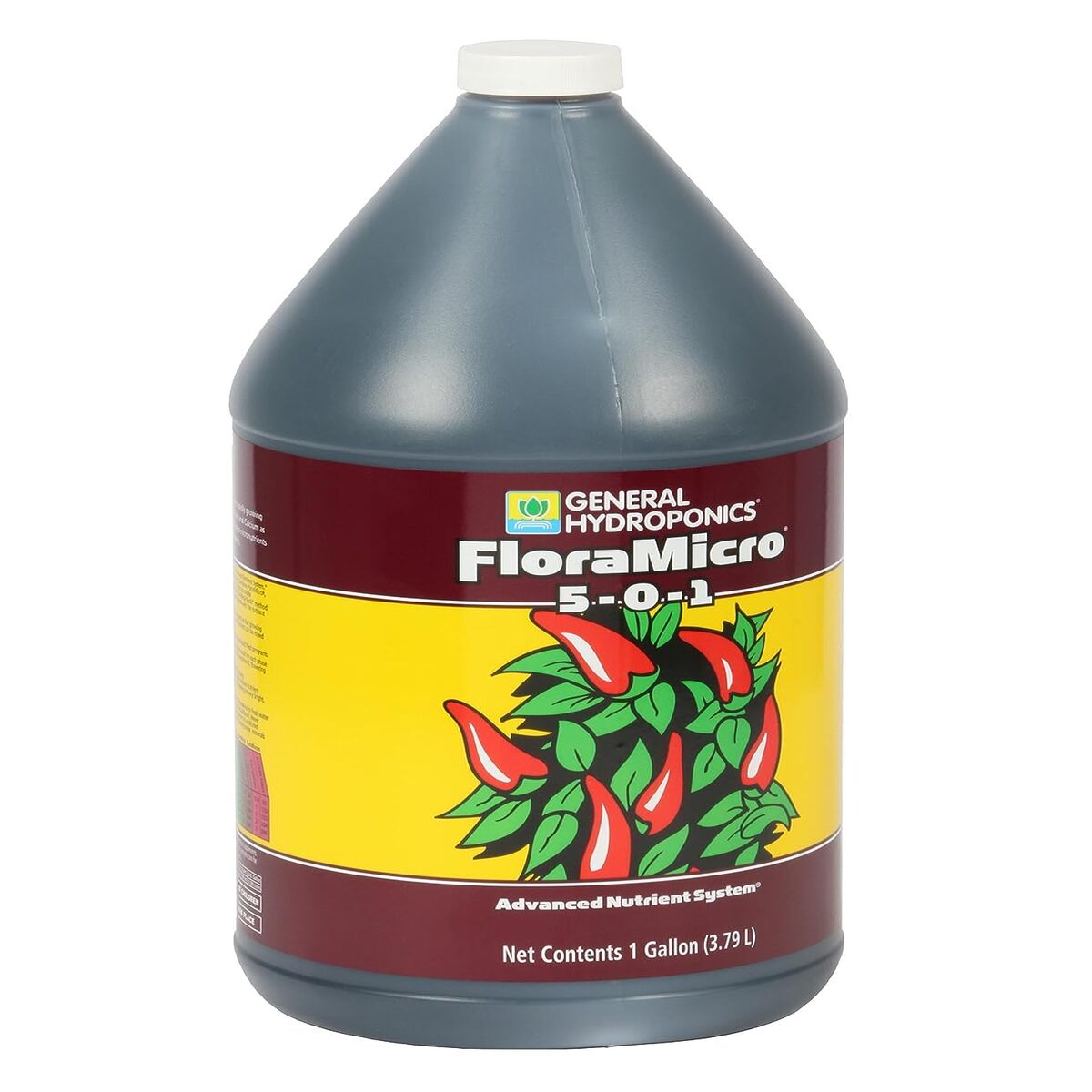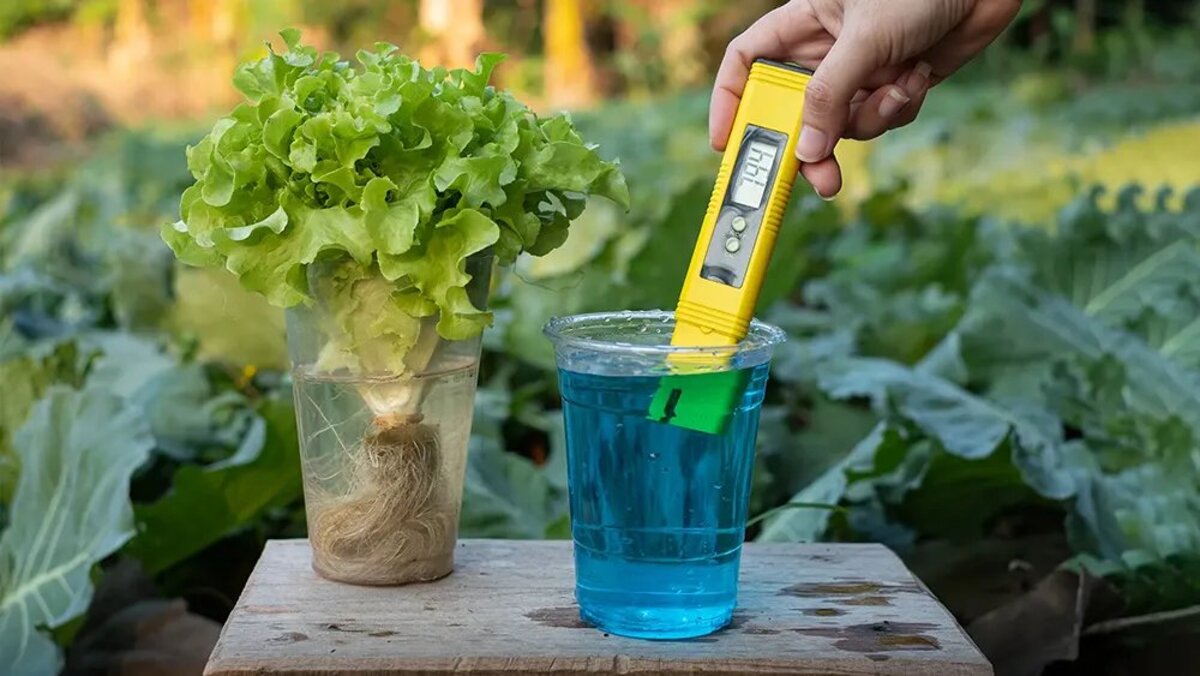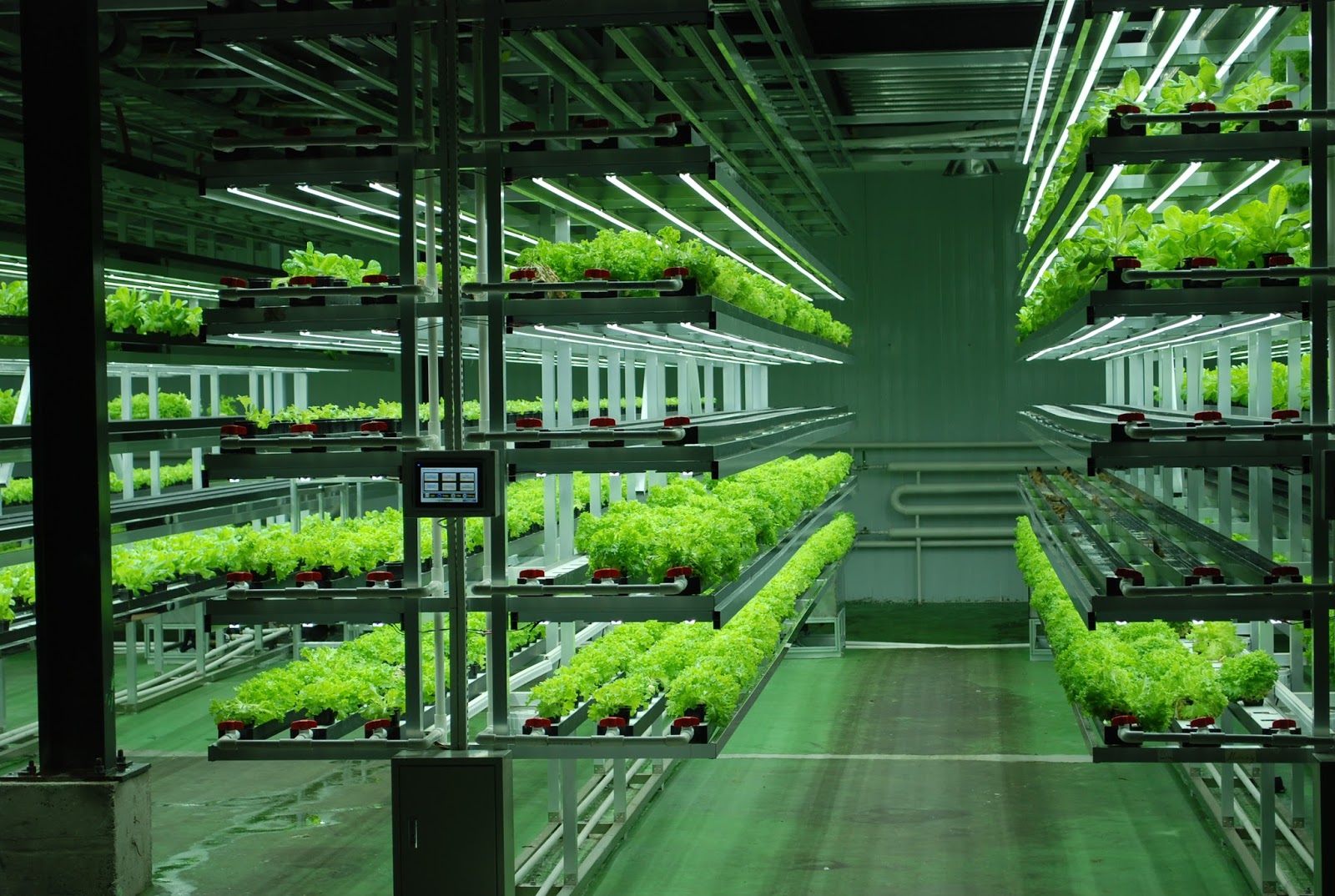Home>Gardening Basics>Getting Started>What Is TDS In Hydroponics
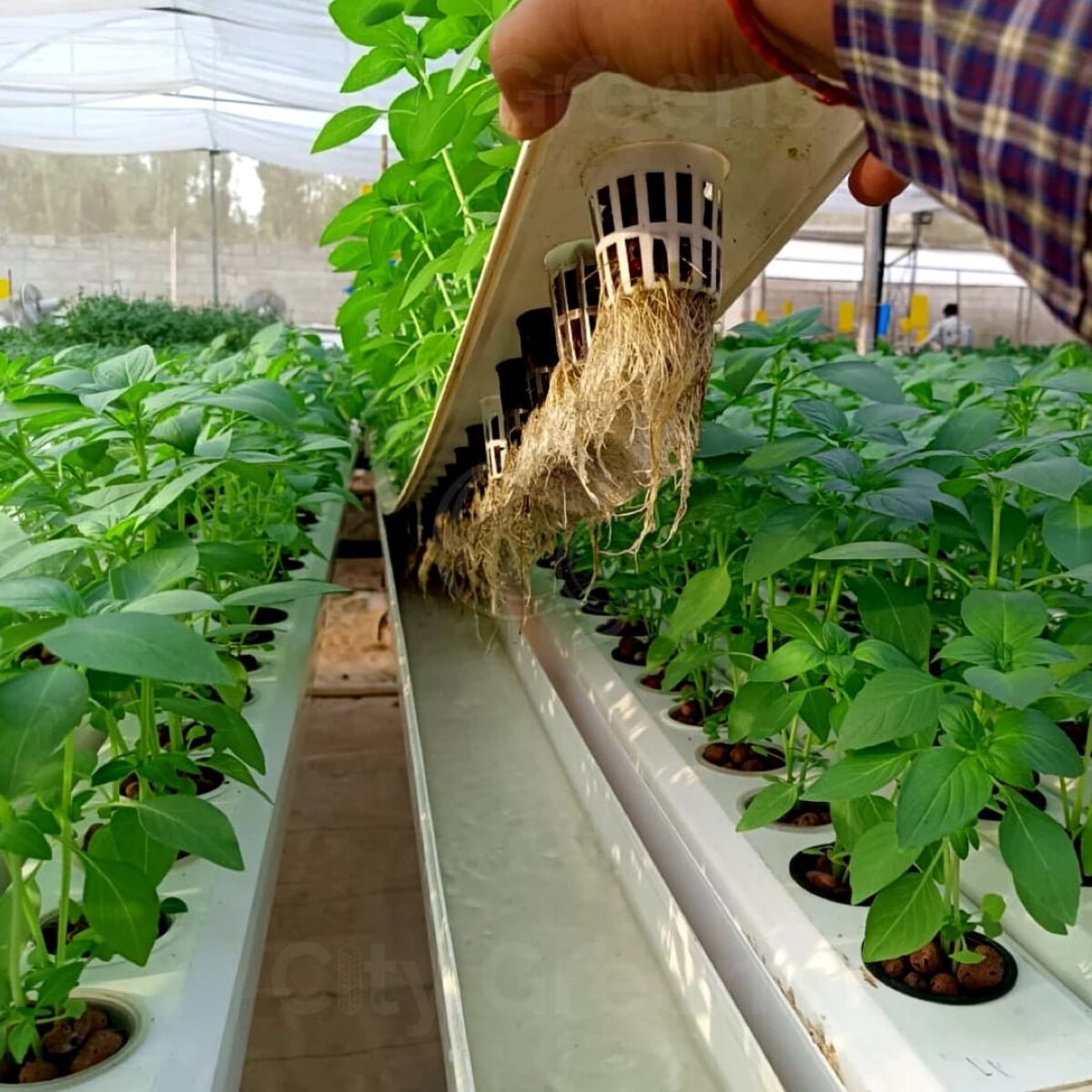

Getting Started
What Is TDS In Hydroponics
Published: September 24, 2023
Learn what TDS is in hydroponics and how to get started with measuring and managing it for optimal plant growth.
(Many of the links in this article redirect to a specific reviewed product. Your purchase of these products through affiliate links helps to generate commission for Chicagolandgardening.com, at no extra cost. Learn more)
Table of Contents
Introduction
Welcome to the world of hydroponics, a modern and efficient method of growing plants without soil. Hydroponics has gained popularity in recent years due to its numerous advantages, such as better control over plant nutrition, improved crop yield, and reduced water usage. However, to achieve optimal results in hydroponics, it is essential to understand and monitor the Total Dissolved Solids (TDS) in your system.
TDS refers to the concentration of dissolved minerals, salts, and nutrients in water or nutrient solution. It serves as a crucial indicator of the nutrient balance in hydroponic systems. By measuring the TDS, you can ensure that your plants are receiving the correct amount of essential nutrients for healthy growth and development.
Understanding TDS is fundamental in hydroponics because it directly impacts plant health and overall productivity. Monitoring and adjusting the TDS levels allow growers to maintain an optimal nutrient balance, preventing nutrient deficiencies or toxicities.
In this article, we will delve into the significance of TDS in hydroponics, its measurement, appropriate TDS levels for different plants, and how to adjust TDS levels in your hydroponic system. By the end, you will have a comprehensive understanding of TDS and be able to optimize your hydroponic setup for maximum plant growth and yield.
Definition of TDS
Total Dissolved Solids (TDS) refers to the concentration of various inorganic and organic compounds dissolved in a solution. In water, TDS is a measure of the total amount of dissolved solids, including minerals, salts, metals, and other substances. These dissolved solids can come from natural sources like rocks and soil, or they can be introduced through human activities such as agriculture and industrial processes.
TDS is typically measured in parts per million (ppm) or milligrams per liter (mg/L). It provides valuable information about the quality and composition of a solution. In hydroponics, TDS measurement is used to monitor the nutrient concentration in the nutrient solution or the water used to irrigate the plants.
In a hydroponic system, plants rely on the nutrient solution to provide all the essential elements they need for growth and development. By measuring the TDS, growers can ensure that the nutrient solution has the correct balance of minerals and nutrients for optimal plant health. This information allows growers to adjust and fine-tune the nutrient solution to meet the specific requirements of different plant species or growth stages.
TDS measurements are also crucial for identifying potential problems in a hydroponic system. High TDS levels may indicate an excess concentration of nutrients, which can lead to nutrient imbalances and plant stress. Conversely, low TDS levels may suggest nutrient deficiencies, impeding plant growth and productivity.
In summary, TDS is a measure of the concentration of dissolved solids in a solution, including minerals, salts, and other substances. Monitoring TDS in hydroponics enables growers to optimize nutrient levels, identify potential issues, and ensure that plants receive the necessary nutrients for healthy growth.
Importance of TDS in Hydroponics
TDS plays a crucial role in hydroponics as it directly affects the growth and overall health of plants. Maintaining the appropriate TDS levels in the nutrient solution is essential for several reasons:
- Nutrient Balance: TDS measurement allows growers to maintain the ideal balance of nutrients in the hydroponic system. By monitoring TDS levels, you can ensure that the nutrient solution contains the optimal concentrations of essential elements like nitrogen, phosphorus, and potassium, as well as secondary and micronutrients. This ensures that plants receive the appropriate nutrients to support their growth and development.
- Preventing Nutrient Deficiencies: Low TDS levels can indicate a lack of essential nutrients in the nutrient solution. Nutrient deficiencies can lead to stunted growth, yellowing leaves, and poor plant health. By regularly monitoring TDS, growers can identify and correct nutrient deficiencies promptly, ensuring that plants have all the necessary elements for optimal growth.
- Avoiding Nutrient Toxicity: On the other end of the spectrum, high TDS levels can indicate an excess concentration of nutrients in the solution. This can result in nutrient toxicity, which can damage plant roots and hinder nutrient uptake. Monitoring TDS levels allows growers to adjust the nutrient solution and prevent nutrient buildup, ensuring that plants receive the right amount of nutrients without causing harm.
- Adjusting for Plant Specific Needs: Different plant species have varied nutrient requirements. By monitoring TDS levels, growers can adjust the nutrient solution to meet the specific needs of different plants. This customization ensures that each plant receives the ideal balance of nutrients for optimal growth, flowering, and fruiting.
- Optimizing Growth and Yield: Maintaining appropriate TDS levels promotes healthy plant growth, leading to increased yield and higher quality crops. By ensuring that plants have access to the right nutrients in the correct quantities, growers can maximize productivity and harvest nutritious, abundant produce.
In summary, TDS monitoring is crucial in hydroponics as it allows growers to maintain nutrient balance, prevent deficiencies and toxicities, customize nutrient solutions for different plant species, and optimize growth and yield. By managing TDS levels effectively, hydroponic growers can ensure healthy and thriving plants throughout the growth cycle.
Measuring TDS in Hydroponics
Measuring TDS in hydroponics is a straightforward process that involves the use of a TDS meter or EC meter (Electrical Conductivity meter). These meters work by measuring the electrical conductivity of the solution, which is directly related to the concentration of dissolved solids.
Here are the steps to measure TDS in hydroponics:
- Calibration: Before taking any TDS measurements, it is essential to calibrate your TDS meter. This ensures accurate readings. Most TDS meters come with calibration solutions and clear instructions on how to calibrate them properly. Make sure to follow the manufacturer’s guidelines.
- Preparing the sample: Take a small sample of the nutrient solution from your hydroponic system. It is advisable to take samples from different areas of the system to get an average reading. This helps ensure that the TDS measurement represents the overall nutrient concentration in your system.
- Temperature compensation: TDS meters generally have a temperature compensation feature. It is important to adjust the TDS readings according to the temperature of the solution. The meter usually provides instructions on how to set the temperature compensation. This step ensures accurate TDS measurements, as the electrical conductivity of the solution can vary with temperature.
- Taking the TDS measurement: Immerse the probes of the TDS meter into the sample solution. Allow the meter to stabilize and display the TDS reading. The reading is typically displayed in ppm or mg/L. Record the measurement for future reference or analysis.
- Interpreting the TDS measurement: Compare the TDS measurement to the recommended TDS range for your specific plants. This information can be obtained from reputable sources, hydroponic experts, or the plant nutrient manufacturer. This comparison helps you determine if the nutrient concentration is within the desired range or if any adjustments need to be made to the nutrient solution.
It is important to regularly measure the TDS in your hydroponic system to ensure that the nutrient solution is properly balanced and providing the necessary nutrients for your plants. By monitoring TDS, you can identify any changes or issues and make appropriate adjustments to maintain optimal plant health and growth.
Ideal TDS Levels for Different Hydroponic Plants
The ideal TDS levels for hydroponic plants can vary depending on the specific plant species, growth stage, and environmental conditions. Each plant has unique nutrient requirements, and it is essential to provide the appropriate TDS range to support optimal growth and development.
Here are some general guidelines for TDS levels in hydroponics:
- Lettuce and Leafy Greens: Leafy greens, such as lettuce, spinach, and kale, generally thrive in TDS levels between 800-1500 ppm. These plants tend to have lower nutrient requirements compared to fruiting plants.
- Herbs: Most herbs, such as basil, parsley, and cilantro, prefer TDS levels around 1200-1600 ppm. These plants benefit from slightly higher nutrient concentrations for robust growth and flavor development.
- Tomatoes and Peppers: Fruit-bearing plants like tomatoes and peppers have higher nutrient demands. The recommended TDS range for these plants is typically between 1500-2000 ppm. However, it is important to monitor the plants closely to ensure they do not experience nutrient burn or toxicity.
- Cucumbers and Zucchini: Cucumbers and zucchini thrive in TDS levels ranging from 1600-2200 ppm. These plants require higher nutrient concentrations to support their vigorous growth and fruit production.
- Strawberries: Strawberries have relatively lower nutrient requirements. They typically perform well within a TDS range of 800-1200 ppm. It is important to note that strawberries are sensitive to high salt levels, so it is essential to exercise caution and avoid nutrient excess.
Remember, these are general guidelines, and it is crucial to monitor your plants closely and make adjustments as needed. Factors such as plant genetics, growth stage, temperature, and humidity can affect nutrient requirements. It is always recommended to refer to specific plant nutrient guidelines or consult with experienced hydroponic growers for precise TDS recommendations.
By providing the ideal TDS levels for your hydroponic plants, you can ensure they receive the right balance of nutrients for healthy growth, strong root development, and optimal yield.
Adjusting TDS Levels in Hydroponic Systems
Maintaining the appropriate TDS levels in your hydroponic system is essential to provide optimal nutrient balance for your plants. There are several ways to adjust the TDS levels based on the specific needs of your plants:
- Diluting the Nutrient Solution: If the TDS level is too high for your plants, you can dilute the nutrient solution with water. Gradually add water to the nutrient reservoir while monitoring the TDS levels until you achieve the desired range. Make sure to adjust the nutrient solution concentration accordingly to maintain the ideal nutrient balance.
- Increasing Nutrient Concentration: If the TDS level is too low, you can increase the nutrient concentration in the solution. This can be done by adding more concentrated nutrient solution or adjusting the nutrient ratios. It is important to follow the manufacturer’s instructions and guidelines to avoid nutrient imbalances or toxicity.
- Monitoring and Adjusting Nutrient Feed Schedule: By monitoring the TDS levels regularly, you can identify patterns or trends in nutrient uptake by your plants. Adjust the nutrient feed schedule accordingly to ensure that plants receive the necessary nutrients in the right quantities at the appropriate times. This can help maintain TDS levels within the desired range.
- Replacing Nutrient Solution: Over time, the nutrient solution can accumulate excess salts or nutrient imbalances, leading to high or low TDS levels. To rectify this, consider replacing a portion or the entire nutrient solution with fresh solution. This helps reset the TDS levels and provides a fresh supply of nutrients for your plants.
- Adjusting pH Levels: pH levels can influence nutrient availability and uptake. If TDS levels are off, it is important to check and adjust the pH levels of the nutrient solution. This ensures optimal nutrient absorption and overall plant health.
It is important to make gradual adjustments to TDS levels to avoid shocking or stressing your plants. Sudden drastic changes can harm the roots and lead to plant wilting or nutrient deficiencies. Monitor the plants closely after adjusting TDS levels to ensure they respond positively and show signs of improved growth.
Remember, each plant species and growth stage may have different TDS requirements. It is crucial to monitor the plants’ overall health, carefully observe their response to adjustments, and make necessary modifications to maintain the ideal TDS levels throughout the growth cycle.
Common Problems Related to TDS in Hydroponics
While monitoring and adjusting TDS levels in hydroponics is crucial for plant health, there can be some common problems associated with TDS that growers may encounter. It is important to be aware of these issues and take appropriate measures to address them:
- Nutrient Deficiencies: One common problem is nutrient deficiencies caused by low TDS levels. Insufficient nutrient concentrations in the nutrient solution can lead to stunted growth, yellowing leaves, or poor fruiting. Regularly monitor TDS levels and adjust nutrient concentrations as needed to prevent nutrient deficiencies.
- Nutrient Toxicity: On the opposite end, high TDS levels can lead to nutrient toxicity. Excessive nutrient concentrations can cause leaf burn, root damage, and hinder nutrient uptake. Be vigilant and monitor TDS levels regularly, ensuring they stay within the recommended range for your plants.
- Imbalanced Nutrients: Incorrect nutrient ratios in the nutrient solution can lead to nutrient imbalances. This can result in inhibited growth, nutrient antagonism, or nutrient lockout. Regular testing and adjustment of TDS levels, along with proper nutrient formulation, can help maintain the optimal nutrient balance required for healthy plant growth.
- Algae and Biofilm Formation: High TDS levels combined with warm temperatures and sunlight can promote the growth of algae and biofilm in the hydroponic system. These unwanted organisms can clog irrigation lines, compete with plants for nutrients, and impact overall system performance. Proper maintenance, disinfection, and regular monitoring of TDS levels can help prevent algae and biofilm formation.
- Inaccurate TDS Readings: Using a calibrated TDS meter is crucial for obtaining accurate readings. If the TDS meter is not calibrated or if it is old and no longer accurate, it can lead to incorrect TDS measurements. Regularly calibrate and replace TDS meters when necessary to ensure accurate readings and proper adjustments.
Addressing these common problems requires careful monitoring, regular maintenance, and swift action. By staying vigilant and proactive, growers can mitigate the impact of these issues and maintain optimal TDS levels for healthy, thriving hydroponic plants.
Conclusion
TDS measurement plays a vital role in hydroponics, providing valuable insights into the nutrient balance and overall health of your plants. By monitoring and adjusting TDS levels, hydroponic growers can fine-tune the nutrient solution to meet the specific needs of different plant species and growth stages.
Understanding the ideal TDS range for your hydroponic plants is crucial to ensure optimal nutrient availability and avoid nutrient deficiencies or toxicities. Different plants have varying nutrient requirements, and it is important to customize the nutrient solution accordingly.
Regularly measuring TDS levels allows growers to identify and address potential issues promptly, such as nutrient imbalances, deficiencies, or excesses. By maintaining the correct TDS range, growers can optimize plant growth, improve crop yield, and enhance the overall quality of the harvested produce.
It is important to note that TDS measurement is just one aspect of hydroponic plant care. pH levels, temperature, lighting, and other environmental factors should also be considered in conjunction with TDS to ensure optimal plant health.
In conclusion, TDS is a critical factor to monitor in hydroponics, as it provides insight into the nutrient balance and health of your plants. By understanding and adjusting TDS levels, you can create an optimal growing environment for your hydroponic plants, leading to healthy growth, increased yields, and high-quality harvests.
